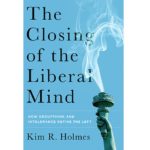Can one find a way to describe the world in all its features—including references to consciousness, thinking, purpose, meaning, and morality—while maintaining that there is nothing more to the fundamental constitution of the universe than what the contemporary natural sciences tell us? Sean Carroll, the distinguished theoretical physicist at the California Institute of Technology, thinks the answer is yes. His new book, The Big Picture: On the Origins of Life, Meaning, and the Universe Itself, offers a defense of what he terms “poetic naturalism.”
A distant anticipation of Carroll’s approach is the famous materialist epic of Lucretius, De rerum natura (On the Nature of Things), written in the first century B.C. To those who find the implications of a universal materialism especially grim, Lucretius tells us that he will:
. . . rim the lesson, as it were, with honey,
Hoping, this way, to hold your mind with verses
Start your day with Public Discourse
Sign up and get our daily essays sent straight to your inbox.While you are learning all that form, that pattern
Of the way things are. [I. 947-50 ]
Although Carroll’s defense of materialism is in prose, he, like Lucretius, hopes to persuade us of the “big picture” that contemporary science unfolds. Carroll also wishes to offer “existential therapy” for those who would doubt there can be meaning in the universe he describes.
Carroll’s commitment to a materialist philosophy of nature is unwavering. He tells us that science provides an “indisputably accurate” Core Theory, according to which everything about the world is reducible to its quantum wave function, which is comprised of the interaction of fermion and boson fields. In their various instantiations, fermions are subatomic particles that account for the solidity of matter; bosons are force-bearing particles that are the source of macroscopic fields such as gravity and electromagnetism. In an appendix, Carroll provides an elaborate analysis of the Feynman path integral, a single mathematical formula that “encapsulates all that we know about the quantum dynamics of this model.” The Core Theory is not a complete account since it has yet to include dark matter, but the theory does necessarily exclude any immaterial things.
Poetic Naturalism
The details of Carroll’s description of the quantum mechanics of the “big picture” are not so important as the broader philosophical claims that he makes. His “big picture” is ultimately a philosophical narrative that incorporates the insights of contemporary science. It is a narrative that seeks to plumb the “deepest layer of reality,” at which level there are no oceans, mountains, living organisms, or anything else we experience in the macroscopic world. There are not even electrons and photons: it is just quantum wave function. “Everything else,” Carroll observes, “is just a convenient way of talking.”
Carroll wants to avoid the conclusion of eliminative materialists who, accepting the materialism thought to be required by contemporary science, argue that purported non-material realities (consciousness, mind, free will, purpose, morality, and the like) are illusory. He also rejects the views of those who add immaterial features to reality, such as the claim that mental states are real and distinct from physical states. In rejecting both views, Carroll offers an alternative:
Poetic naturalism sits in between: there is only one, unified, physical world, but many ways of talking about it, each of which captures an element of reality. Poetic naturalism is at least consistent with its own standards: it tries to provide the most useful way of talking about the world we have.
These different ways of talking contain vocabularies created for specific purposes, and we need to be careful that they do not contradict the fundamental thesis that there is only one world and that at its deepest level it is only a physical reality. Carroll describes three interrelated types of stories that together offer an account of the “big picture.” The first and most fundamental is the scientific description of the particles and forces that account for the universe at the microscopic level. The second is made up of what he calls “emergent” or “effective” descriptions about macroscopic “collections of stuff that we group into individual entities: from ships to living organisms, including human beings.” The third is discourse about values, “concepts of rights and wrongs, purpose and duty, beauty or ugliness.”
At what Carroll calls the deepest level of reality, there are neither “purposes” nor “natures,” only patterns that operate in purely impersonal ways. It is from these operations that the macroscopic world emerges. One aim of his narrative is to offer an explanation of how a “purely physical universe made of interacting quantum fields is actually able to account for the macroscopic world of our experience.” How is it that order and complexity “arise in a world without transcendent purpose?” How do we make sense of consciousness and subjective experience “without appealing to substances and properties beyond the purely physical?” In a universe that at its core is without purpose, can we have meaning and moral rectitude in our lives? Answers to these questions are the burden of the final three parts of Carroll’s book.
One example of how Carroll thinks we need to understand the foundational role of the primary narrative—especially that of quantum mechanics—is evident in his discussion of discourse about body and soul. He rejects any account of the mind and soul as separate substances, since there is no place for such substances within the Core Theory. Indeed, for a poetic naturalist, “mind” is “simply a way of talking about the behavior of certain collections of physical matter.” To speak of life after death is meaningless. “Life is a way of talking about a particular sequence of events taking place among atoms and molecules arranged in the right way.” “Life” is only a label we use to describe certain kinds of processes.
Even a key notion like causality does not fall within the fundamental features of reality; causality is a way of thinking that functions within certain individual theories about the world. Cause, Carroll tells us, is a term “that we invent in order to provide useful descriptions of the macroscopic world.” Cause and effect relations flow from the temporal character of our universe—the arrow of time; these notions emerge as we move from the microscopic level to that of everyday experience. “Different moments in time in the history of the universe follow each other, according to some pattern, but no one moment causes any other.” This view of causality is heavily influenced by David Hume and narrowly restricts it to temporal sequence.
Emergence of Complex Structures
To explain the relationship between the elements of the Core Theory and the macroscopic world, Carroll employs a broad notion of emergence. This concept traditionally refers to the ways in which higher level properties (e.g., those of water) emerge from the combination of more elementary constituents (e.g., hydrogen and oxygen). He claims that as time passes and entropy increases,
the configuration of matter in the universe takes on different forms, enabling the emergence of different higher-level ways of talking. The appearance of something like “purpose” simply comes down to the question: “Is purpose a useful concept when developing an effective theory of this part of reality in this particular domain of applicability?”
“Consciousness” and “understanding” are concepts “we invent in order to give ourselves more useful and efficient descriptions of the world.” These concepts are not illusions, but accepting their reality does not mean a rejection of the laws of physics. All such concepts “are part of a higher-level vocabulary we use to talk about the emergent behavior of the underlying physical system, [they are] not something separate from the physical system.” This general mode of explanation allows the poetic naturalist to argue that
we are collections of vibrating quantum fields held together in persistent patterns by feeding off of ambient free energy according to impersonal and uncaring laws of nature, and we are also human beings who make choices and care about what happens to ourselves and others.
Realism and Nominalism
If materialism is true, what is the “element of reality” that trees, persons, causes, consciousness, thinking, and moral judgments all share? This element, Carroll says, is the result of a certain way of talking about the macroscopic world. These concepts emerge as we move from the world of the quantum wave function to that of our ordinary experience. Is there a new reality to which these concepts refer, or is the only reality the concepts themselves and the way we use them? In the end, are the various sciences of the macroscopic world only concerned with terms and concepts? This is a kind of nominalism that is radically different from the realism that Carroll grants to the scientific study of the microscopic world. That study, which is expressed in the Core Theory, is concerned with the way things really are.
For poetic naturalism, the reality of concepts like consciousness, causality, and organism is only linguistic; they perform functions in particular narratives. The discussion is thus a nominalist discussion about concepts, not a realist discussion of what is true about nature. Yet, when Carroll turns to fermions, bosons, and the quantum wave function, he does think that these terms refer to the fundamental furniture of the universe. At this level of discourse, he is a realist; whereas in other areas he is a nominalist. For Carroll, what emerge from the microscopic world are concepts, not things. Is the science of biology, that studies cells and organisms, for example, only a convenient “way of talking”? Thus, in discussing our knowledge of the way things are, he seems to be at once both a realist (when referring to particle physics) and a nominalist (with respect to other natural sciences). Eliminative materialism (which Carroll rejects) seems more coherent than poetic naturalism.
Carroll presupposes that particle physics and quantum mechanics concern the deepest level of reality. Employing an epistemology based in the probabilistic methodology of Thomas Bayes (1702-1761), Carroll argues that all claims to knowledge and belief begin with “prior credences” that we “apply to every factual proposition that may or may not be true about the world.” Beginning with these prior credences, we reason to the likelihood of what will happen or be the case, and then “update our credences on the basis of what we observe.” Following this process, and employing the information provided by contemporary science, Carroll thinks that we ought to reject claims for the existence of immaterial entities (such as the soul), for God, and for the view that the universe is created.
Deeper Than the Core
For Carroll, the Core Theory is in a sense prior to our particular prior credences. It contains the information that we must use to “update” all other credences. This judgment of priority is in the philosophy of nature and metaphysics concerning what is the deepest or most profound approach to the world. It is also a judgment that presupposes that there are only two basic options in our approach to the world: an empirical, materialist view that the physical world is all there is, or a dualist view that affirms the existence of both physical and non-physical substances. We might, however, in the tradition of Aristotle and Thomas Aquinas, entertain a third possibility: that the world the natural sciences study embraces matter and form, not as separate substances but rather as co-principles of all things in the world.
We come to study nature first through those sciences based on sense experience. Yet this temporal priority in our knowing the world, including knowledge of microscopic quantum processes, ought not to be confused with an ontological priority. More fundamental for any grasping of the way things are is the analysis that is properly carried out in the philosophy of nature and metaphysics: an analysis in terms of the very principles of natural things, including what motion, change, and causes are. We should judge claims about the broad implications of the Core Theory, as well as a more general commitment to materialism, in the deeper discourse of philosophy of nature and metaphysics. In this sense, Carroll’s big picture is not big enough.
We may very well find the impressive scope and details of Carroll’s Big Picture to be compelling. The book is a significant achievement in describing the current natural sciences and how they can be employed in realms beyond what are traditionally those of these sciences. Furthermore, Carroll eschews the more vulgar atheism of other famous scientists, such as Richard Dawkins and Lawrence Krauss. Yet, in a culture so pervasively informed by the allure and authority of science, we need to be aware of the honey with which Carroll, like Lucretius, rims his account.












